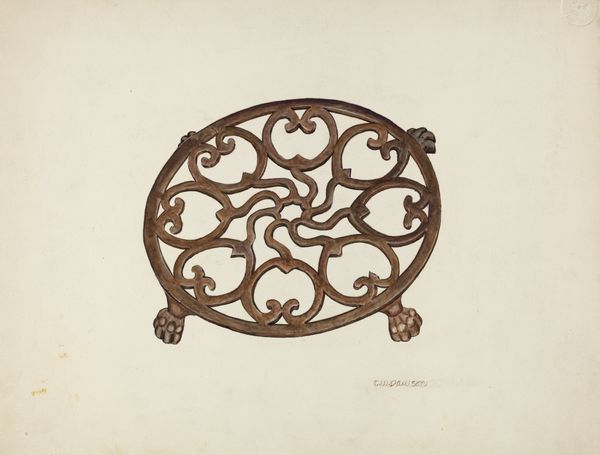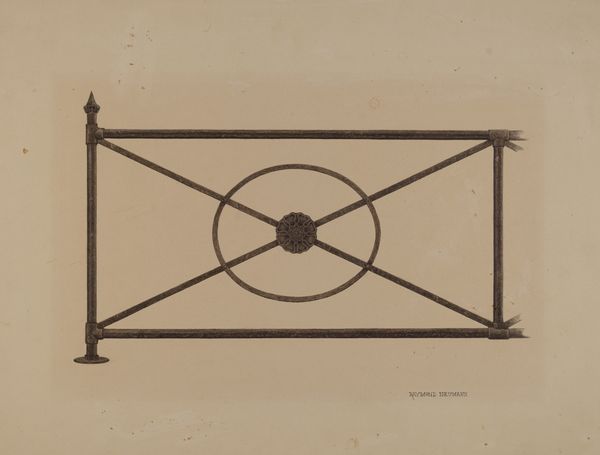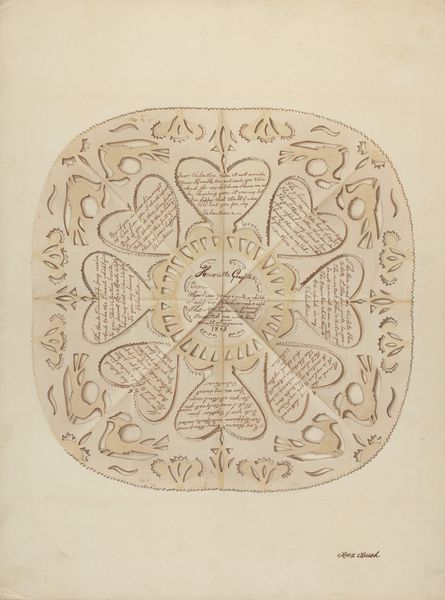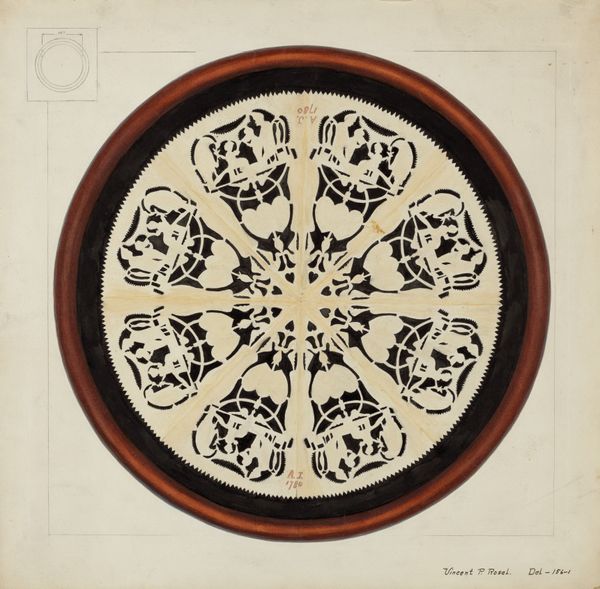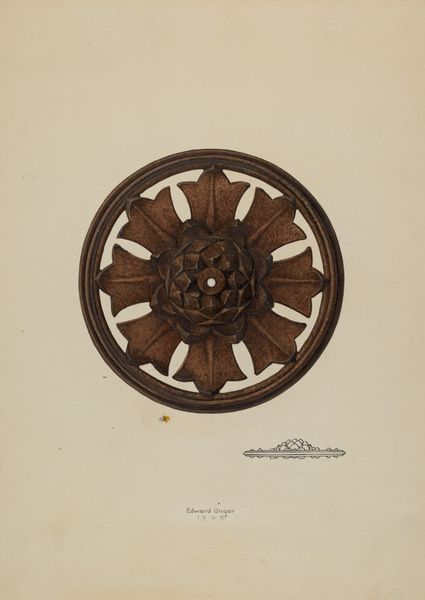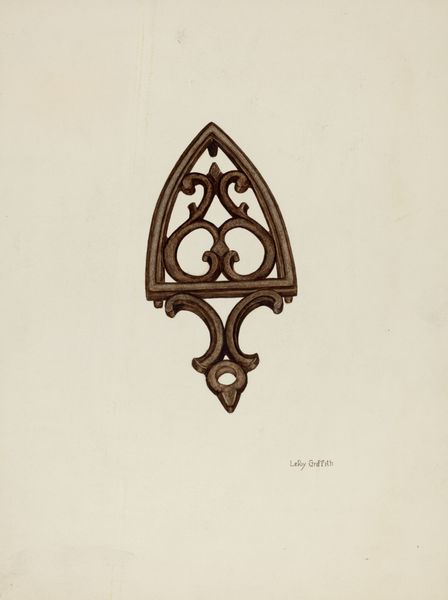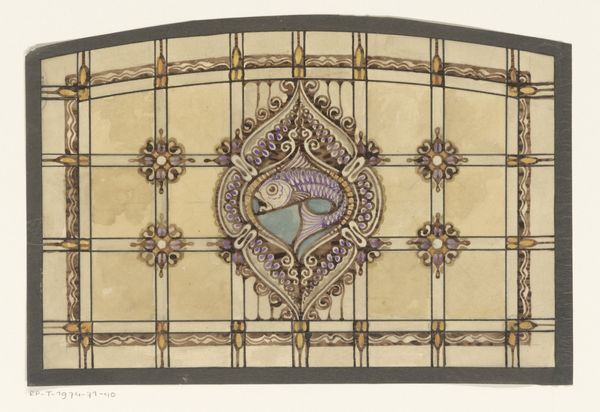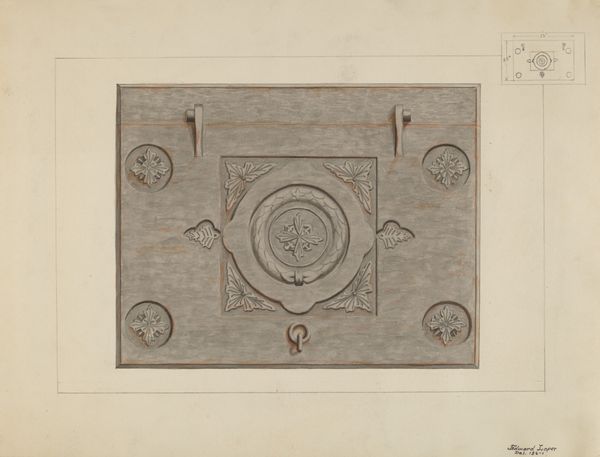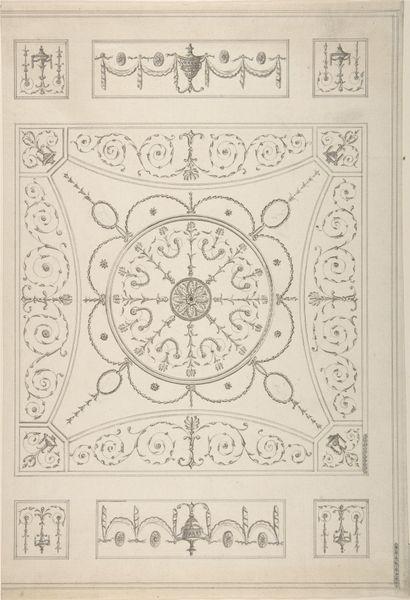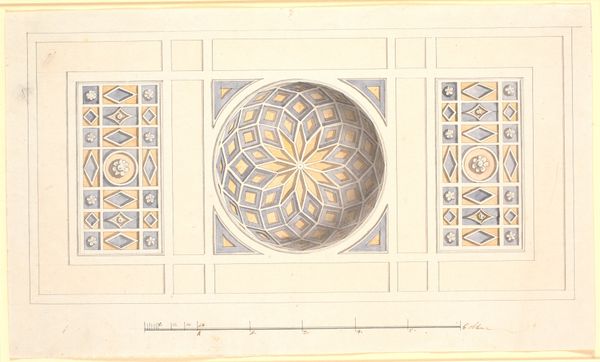
drawing, paper, watercolor
#
drawing
#
toned paper
#
water colours
#
paper
#
watercolor
#
geometric
#
line
#
watercolour illustration
Dimensions: overall: 24.8 x 35.4 cm (9 3/4 x 13 15/16 in.)
Copyright: National Gallery of Art: CC0 1.0
Curator: Max Fernekes' "Arch Grill," created in 1938, presents a compelling geometric study rendered in watercolor and drawing on paper. What's your initial reaction to its form? Editor: Stark. The brown watercolour on the toned paper conveys a somber mood. The concentric circles and spiraling flourishes feel imprisoned by that rigid outer structure. Curator: I find that sentiment fascinating considering its creation. Consider the 1930s—the end of the Bauhaus, a period of great political and social upheaval and escalating nationalism. The geometric elements here, particularly the circles, might symbolize enclosure, the limitations imposed on creative expression, or perhaps the artist’s personal experiences of feeling confined. Editor: While I recognize the potential for symbolic interpretation rooted in sociopolitical history, I'm drawn to its internal visual dynamics. The precision of the lines against the wash of watercolors, and the contrasting tension between geometric exactitude and organic swirl, it all creates a visually arresting pattern. The symmetry itself invites contemplation, the central floral element is interesting but perhaps could have been bolder, more in line with the scale. Curator: True, that central point almost feels hesitant. Perhaps the artist subtly challenges the very notion of a firm "center" or fixed identity. The grill's function itself - a barrier or screen - implies a denial of access. In that respect, it's hard not to see reflections on restrictions during that volatile era. Who gets access, and on whose terms? Editor: An intriguing sociopolitical point of view. For me, it’s a satisfying aesthetic system built of interlocking shapes and rhythmic repetition, inviting the viewer into its intricacies regardless of that contextual frame. The use of watercolour is clever here, not in a representational, naturalistic way, but abstract and evocative. It could easily feel rigid and austere were it not for the imperfection inherent in the watercolours. Curator: Yes, its inherent imperfections! The artist’s materials invite different interpretations. Editor: Indeed. From its inherent geometry, a complex arrangement and refined artistry is definitely at play. Curator: A potent example of how artistic creation engages with the social sphere.
Comments
No comments
Be the first to comment and join the conversation on the ultimate creative platform.
